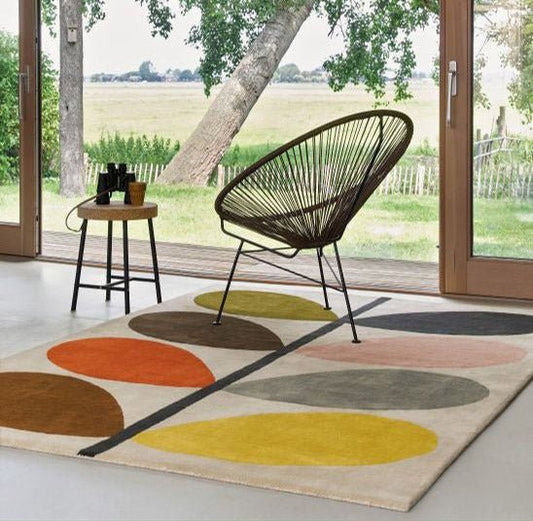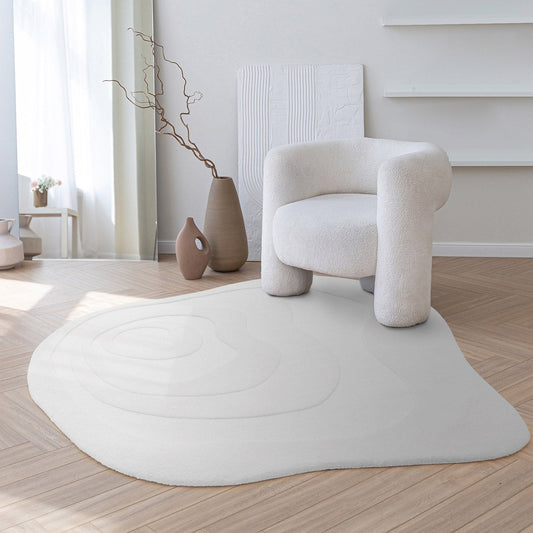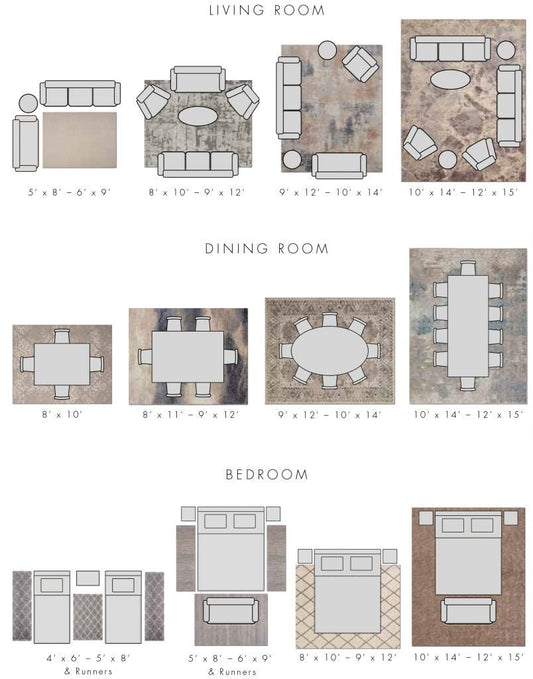Welcome to our comprehensive guide on flattening rugs.
If you've ever unrolled a new rug or repositioned an old one only to find it stubbornly refuses to lay flat, you're not alone.
This common issue can be a source of frustration, but understanding the underlying causes is the first step towards finding an effective solution.

Understanding the Problem
The first step in correcting a rug that has ripples, wrinkles or curled edges is understanding the cause.
Causes of Rugs Not Laying Flat
The issue of rugs not laying flat can stem from various sources.
Prolonged storage, especially in a rolled or folded state, often leads to the rug taking on a curled or rippled shape.
Transportation methods, which often involve tight rolling or folding, can exacerbate this.
The material of the rug also plays a crucial role; natural fibres like wool or cotton may react differently to environmental conditions compared to synthetic materials.
Humidity and temperature changes can cause these materials to expand or contract, leading to warping or curling.
Understanding these causes is essential in determining the most suitable flattening method for your rug.
Identifying Your Rug's Specific Challenge
Each rug's reaction to its environment and handling is unique. To effectively address your rug's reluctance to lay flat, start by assessing its material composition. Natural fibre rugs require different care than synthetic ones.
Check for any specific areas where the rug seems more prone to curling or rippling – edges and corners are common problem areas.
Consider the rug's age and any previous exposure to extreme conditions, as older rugs or those previously subjected to high humidity or varying temperatures might need more gentle handling.
By pinpointing these specifics, you can choose a flattening method that is both safe and effective for your rug's particular needs.
Practical Solutions to Flatten Your Rug
There are various steps you can take to remedy issues with rugs not laying flat on your floor, depending on the cause and severity.
Reverse Rolling
Reverse rolling combats the curls and ripples caused by prolonged storage. To implement this method, unroll your rug and then carefully roll it in the opposite direction. Make sure the roll is tight and even to apply uniform pressure across the rug's surface. Leave the rug rolled up for at least 24 hours.
This method works best for rugs with more rigid foundations or those that have been stored for a long time and recently opened.
Using Heat to Your Advantage
Heat can help relax the fibres of your rug, making it more malleable.
For sunlight treatment, place your rug outdoors in direct sunlight for a few hours, ensuring the whole surface receives even exposure. Be mindful of coloured rugs, as too much sun can lead to fading.
Alternatively, for mild ripples, the ambient heat in a heated room can gradually relax the rug over several days. Many rugs with ripples have the issue straight from their packaging, they have potentially been rolled imperfectly or a long time in storage which may have been cold. Always monitor the rug to ensure it does not overheat or get damaged.

Weighted Flattening
This method involves using heavy objects to press down on the rug, thereby flattening it.
Distribute weight evenly across the rug, especially on the corners and edges. Books, flat stones, or furniture can serve as suitable weights. Leave them in place for a few days, checking periodically to see if the rug is laying flat.
It’s essential to protect the rug's surface from potential damage caused by heavy objects, so consider using a protective layer like a cloth or pad underneath.
Utilising Anti-Slip Underlay and Corner Pads
Anti-slip underlays and corner pads can provide the necessary traction and weight to flatten a rug.
Choose an underlay that’s slightly smaller than your rug or trim it if necessary with a pair of scissors. Place it beneath the rug, ensuring it’s centred and the edges of the rug extend beyond the underlay. Press down to ensure good contact all over the rug.
For corner pads, attach them to the underside of each corner of the rug. These solutions not only help flatten the rug but also prevent slipping, making your rug safer and more stable.
Specialised Techniques for Stubborn Rugs
For more severe issues, more extreme measures may be required. These methods are not always suitable for every rug and should be carried out with care.
Steam Ironing
For challenging rug issues, steam ironing can be an effective method. This technique involves using a steam iron over a damp towel placed on the rug, allowing heat and steam to gently relax the fibres. It's important to proceed with caution to prevent damage. Start by testing on a small, inconspicuous area, and use a moderate heat setting. The goal is to gently coax the rug fibres into laying flat without altering the fabric or causing colour run.
Professional Solutions
When home methods are insufficient, professional interventions can be the key. One such solution is Carpet Stretching, a technique often used by experts to remove wrinkles and improve the flatness of a rug. Professionals use specialised tools like a power stretcher to evenly stretch the rug, correcting issues caused by poor installation, humidity, or general wear and tear.
Another professional service is Relaxing the Rug's Backing. This involves applying treatments to the rug’s backing material to make it more flexible and less prone to curling or buckling.
Professionals have access to high-grade equipment and materials that can safely and effectively treat the backing without damaging the rug’s front.
Lastly, Targeted Repairs can address specific areas of a rug that are causing it not to lay flat, such as re-binding edges or re-weaving sections that have warped.
These specialised repairs require a skilled hand and an understanding of rug construction and materials and may not be feasible or cost-effective depending on the original value of the rug.
Maintaining a Flat Rug
Once you've successfully flattened your rug, regular maintenance is key to keeping it in prime condition. Regular vacuuming helps maintain the fibres' structure, preventing them from settling into a curled position. Avoid exposing the rug to extreme changes in humidity and temperature, which can lead to warping or curling. If you need to store the rug, opt for rolling rather than folding, and store it in a dry, climate-controlled environment. Periodically rotate your rug to ensure even wear, which helps maintain its shape and flatness over time.
The Journey to a Flatter Rug
Flattening a rug might seem like a daunting task, but with the right knowledge and techniques, it's a challenge that can be easily overcome. From understanding the root causes to applying practical solutions and maintaining your rug's flatness, each step contributes to the longevity and beauty of your rug. Remember, every rug is unique and requires a tailored approach. We hope this guide has provided you with the insights and tools needed to ensure your rug lays beautifully flat and continues to enhance your space for years to come.


